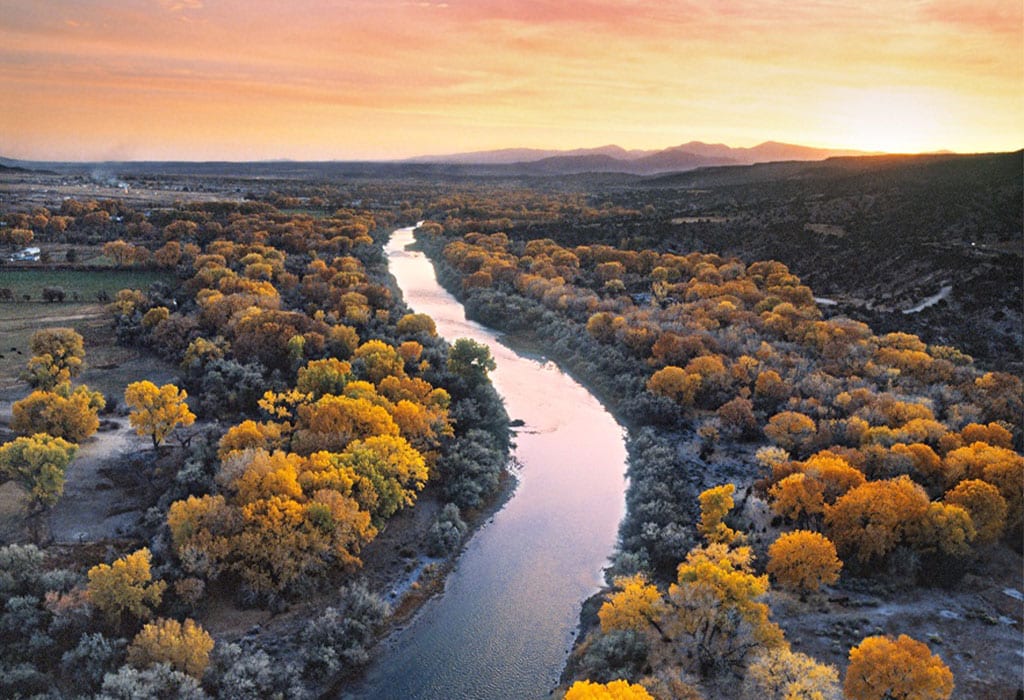Several decades ago, the Santa Fe River was more like a dry arroyo than a river, more a place where La Llorona roamed, crying in search of her dead children. As arroyo-haunting goes, the Santa Fe River was fair game.
At the heart of my desert community, the river was not lost, just forgotten. Love, outrage and compassion of visionary citizens restored the Santa Fe River from dust to a small but important corridor of life.
Tireless volunteers planted cottonwoods and willows along its banks; in response, birds, wildlife and people returned. In 2013, the city passed a living river ordinance to ensure flows can persist even in the flow-challenged reaches through town.
While additional work is needed to realize this vision of a living Santa Fe River, a new, much more insidious threat looms over my hometown waterways.
The Trump administration’s proposal to roll back Clean Water Act protections is a real nightmare for the Santa Fe River and waterways throughout New Mexico.
The rule eliminates categories of currently protected waters, including ephemeral and intermittent streams that only flow in direct response to precipitation; closed-basin lakes and watersheds; interstate waters; and most wetlands. Over 90 percent of waterways in New Mexico fall into these categories and would lose vital federal protections.
The Santa Fe River, as it flows through the city, would likely fall within one of these categories of unprotected waterways. Even worse, however, its upstream headwater streams could also lose critical protections.
The Santa Fe River is just one of thousands of typically dry – but sometimes raging – washes, arroyos, creeks and streams that contribute significant flows to the Rio Grande. Stripping Clean Water Act protections from these diffuse sources of water will impact the 6 million people who rely on the Rio Grande watershed for drinking water and irrigation.
These waterways also create terrestrial and migratory corridors from the mountaintops to the floodplains. It’s along ephemeral waterways that mountain lions, black bears and bobcats roam. As these waterways merge along the central flyway into the Rio Grande, tens of thousands of sandhill cranes, geese, crows and other incredible birds bring beauty and birders to bolster the local recreational economy.
New Mexico waterways are especially vulnerable to the loss of federal clean water protections because the state doesn’t have authority under the Clean Water Act to regulate point-source dischargers. If precipitation-fed waterways were to lose protection, Los Alamos National Laboratory, which sits along a precipitation-fed stream, could be free to discharge directly upstream from Santa Fe’s drinking water intake at the Buckman direct diversion. In addition, the lab’s legacy of pollutants, now closely regulated, could destroy the water quality of thousands of miles of river and its many communities downstream.
Water is scarce in New Mexico, we need every last drop protected.
On March 27, the city of Santa Fe passed Resolution 2019-5 opposing this proposed rule and raising its voice for clean water. Individuals and groups with expertise in the field of clean water in New Mexico are speaking out and providing talking points for other concerned citizens.
We at Rio Grande Waterkeeper and WildEarth Guardians strongly oppose the proposal to gut the Clean Water Act. We implore everyone – individually and collectively – who cares about clean water to drink, safe water to swim in, and healthy water for fish and ecosystems, to stand with us and speak out.
You don’t have to be a scientist, lawyer or water policy specialist to speak for clean water. Please consider submitting a comment letter to the federal agencies behind this rule and calling your local, state, and federal representatives to express your opposition to the proposed rule.
This rule threatens the very soul of this arid region. We need your voice to resist yet another way the Trump administration threatens clean and healthy waterways in New Mexico.
